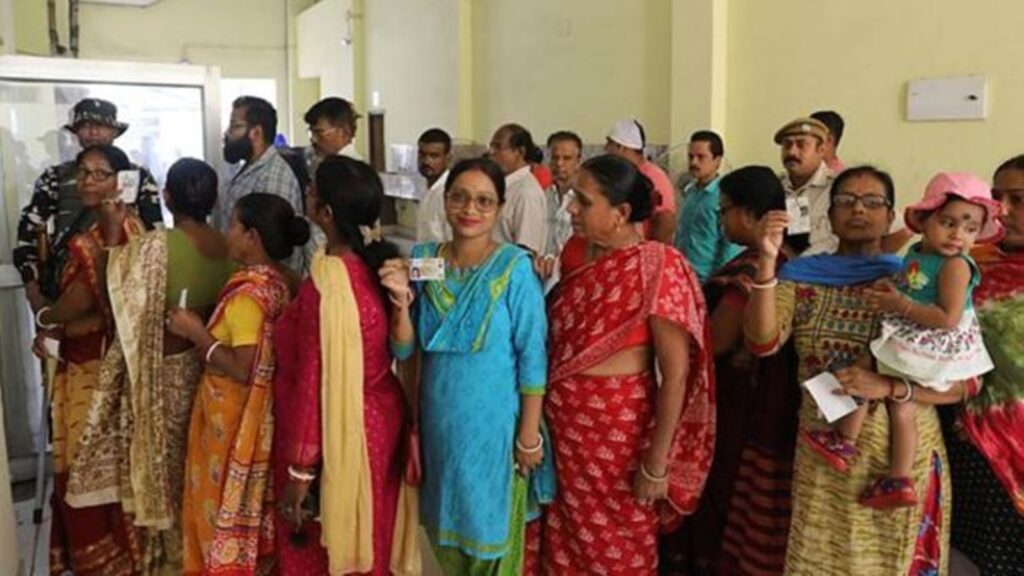Election Insights: The Power of Women’s Votes and Social Dynamics
In a democratic society, election outcomes extend beyond mere victories and defeats; they reveal the underlying currents of voter sentiments and societal norms. The recent election results reflect the aspirations of the populace, influenced by narratives, power balances among various groups, and development promises. The modern electorate is increasingly analytical, recognizing that their choices are shaped by a blend of these elements rather than emotive responses.
Shifts in Voting Patterns: The Importance of Women
The role of women voters has become increasingly pivotal since the last Madhya Pradesh assembly elections. In recent times, the observed shift in the voting behavior of women has sent a strong message to political parties: engaging with the desires of marginalized communities, particularly women, is non-negotiable for any party aspiring to power. The Ladki Bahin Yojana in Maharashtra resonated similarly to the Laadli Behna scheme in Madhya Pradesh, indicating that women voters are coalescing into a significant political bloc that transcends caste and community divisions.
The electoral triumph of the Mahayuti coalition over the Maha Vikas Aghadi can largely be attributed to this demographic. Women and Dalit voters notably disregarded the prevalent narrative of distrust, choosing instead to vote decisively for the ruling alliance. This trend signals the emergence of women as a formidable voting force that cannot be overlooked.
Economic Empowerment: A Path to Agency
Critics of welfare schemes often fail to see the transformative potential of empowering women economically. Giving women financial resources means enhancing their agency within the family unit, influencing critical decisions such as their children’s education or family business ventures. While these initiatives may not grant full empowerment, financial independence is an essential step towards achieving broader social equity—whether gender-based or caste-related—enabling marginalized groups to assert their rights more effectively.
Regional Dynamics and Voter Turnout
Despite ongoing agricultural distress in Maharashtra, rural constituencies demonstrated robust voter participation, notably in Vidarbha, where the Bharatiya Janata Party (BJP) contested a significant number of seats. Farmers, united by caste and agricultural interests, expressed confidence in the Mahayuti government, recognizing the Kisan Samman Nidhi initiative’s potential for long-term benefits. This trend suggests that voters are increasingly prioritizing structural changes over emotionally driven voting.
The Influence of Narratives on Electoral Choices
The impact of narratives on elections is observable not only in India but globally. The "samvidhan bachao" (save the Constitution) campaign limited the BJP’s appeal among Dalit and OBC voters during the general elections. However, the subsequent state elections illustrated the risks of a one-size-fits-all approach, where prevailing issues from national elections did not resonate equally at the state level.
The INDI Alliance’s focus on a Caste Census failed to galvanize voters, while the unifying theme of "Ek Hain Toh Safe Hain" effectively consolidated support among OBC and Dalit populations, with women’s empowerment as a central motif. The divergent reception of similar themes across different states highlights that voters prioritize their immediate concerns over any collective narrative.
Media and Political Dynamics
The recent Maharashtra elections have illustrated the significant role media and social media play in political campaigning. Social media amplified messages from both sides; however, the Mahayuti alliance managed to bridge the trust gap despite facing strong anti-incumbency sentiments. This underscores the importance of effective communication and the discernment of key issues in a crowded information landscape.
In Maharashtra, where political dynasties have historically consolidated power, the recent results indicate a potential shift in the political landscape. The BJP’s broader representation of OBC and Dalit leaders, coupled with its outreach to women and first-time voters, demonstrates a commitment to diversifying its political base.
Emerging Voter Alliances
The dynamics of caste and community-oriented voting behaviors reveal a changing landscape. The past decade has shown that traditional voting lines can shift based on emerging collective interests—not purely dictated by party alliances. Recent trends in Maharashtra, Jharkhand, and elsewhere accentuate the growing recognition of women as a cohesive voting bloc across castes and communities, which has proven decisive in recent elections.
The rising significance of women beneficiaries of governmental initiatives illustrates their potential to sway electoral outcomes. The alignment of Dalit and OBC votes under a broader coalition suggests a strategic consolidation, and the electoral performance of the ruling alliance underscores the ability to unite diverse groups around shared goals.
Conclusion
The latest elections signal a notable evolution in the political landscape in Maharashtra, characterized by the ascent of women voters and the reconfiguration of traditional voting patterns. As these dynamics unfold, it is clear that the intersection of economic empowerment and collective identity will play a critical role in shaping future electoral outcomes in India.
This shift toward a more inclusive political environment reflects the urgent need for parties to engage with the aspirations of all citizens, particularly those at the margins, in order to foster a more equitable society.


